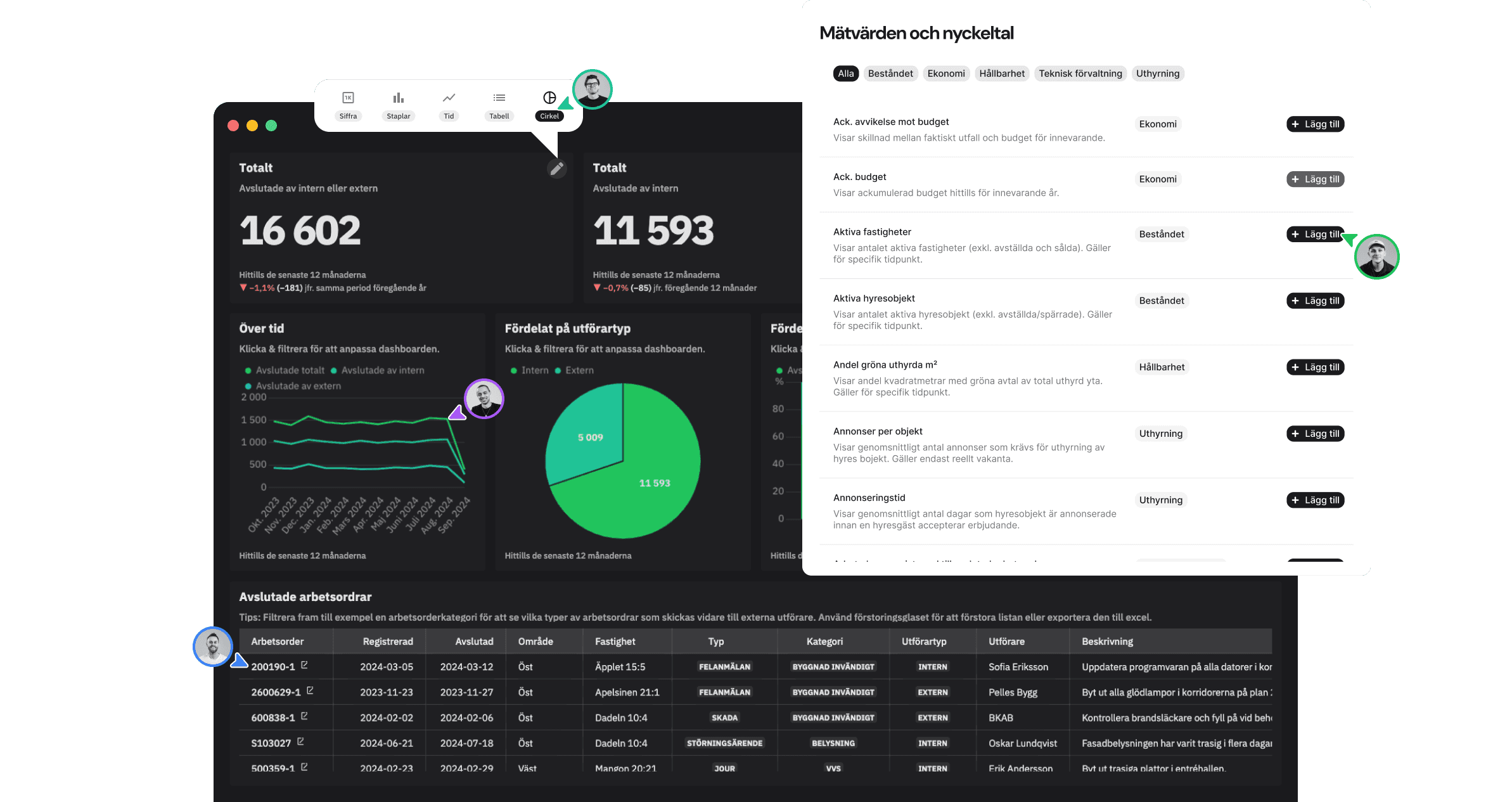Do follow-up tools contribute to the surveillance of employees?
From traditional to increasingly data-driven. The real estate industry has seen major changes in recent years - but has digitalisation gone too far? Has monitoring become employee surveillance?
In recent years, the property industry has gone through a shift from a more traditional approach to an increasingly data-driven way of working. As part of this shift, more managers and leaders are asking for detailed reports on what was accomplished in the company or in a particular department during the month, quarter and year. Is this a sign of a lack of trust in employees? Is it even surveillance?
No, it is not. Closer monitoring of operations is not about trying to pin down employees, or micro manage, as it is called when a manager interferes with the smallest detail of an employee's job.
Monitoring, analysis and reporting are not aimed at targeting employees, but focus on the organisation. Accurate monitoring helps to:
Identify areas of development in the organisation
Ensure an even workflow so that no one has too much or too little to do.
Detect shortcomings in time and take action before major problems arise.
For example, monitoring can help identify things like...
Our external supplier X completes cases on time in only 22% of cases, which means our tenants are not getting their problems resolved in time. Here we need to talk to the supplier to see what is going on, and review the contract if there is no change.
One of our technicians is far too busy in area A and has to subcontract work, while another technician in neighbouring area B has very little to do. If they can help each other, they can share the work more evenly and we can save money by doing more work ourselves.
In property Y, we receive an unusually high number of fault reports on toilet seats. On closer inspection, they are old and vulnerable to faults. Perhaps we should replace them all at the same time in order to anticipate tenants' complaints and get a package price on the order.
The theme of all these examples is that it is the business and tactical decisions that are monitored and evaluated, NOT individual employees.
Then monitoring tools CAN be used to monitor individual performance, but then as support in a performance review. The monitoring tool should help to show what is going particularly well and where extra support may be needed.
Discussing such things in an appraisal interview is developed and fun. In addition, having data to support the discussion makes it more fair, as neither the manager nor the employee goes by gut feeling, but by facts.
Monitoring tools are important for improving operations, especially by identifying areas for development. With the right use, they can also support appraisals through fact-based feedback.




